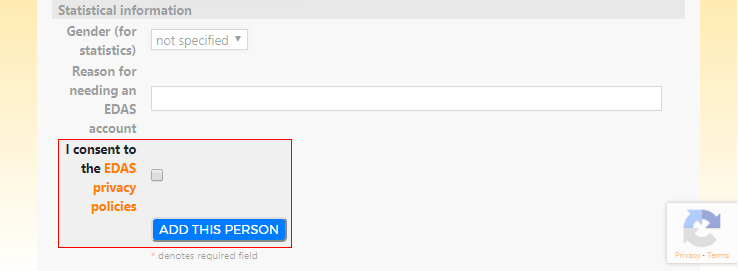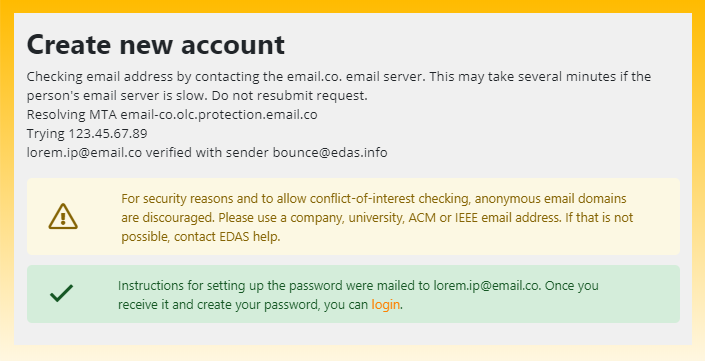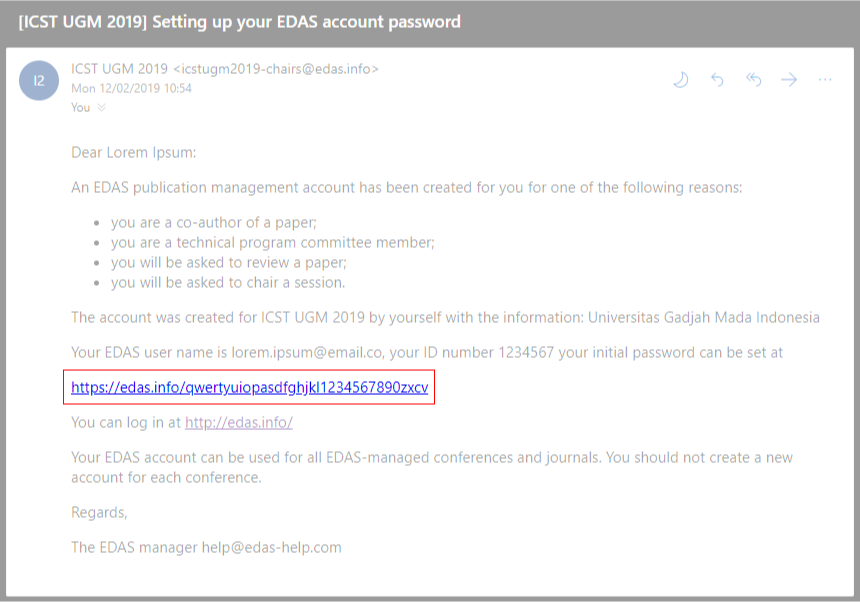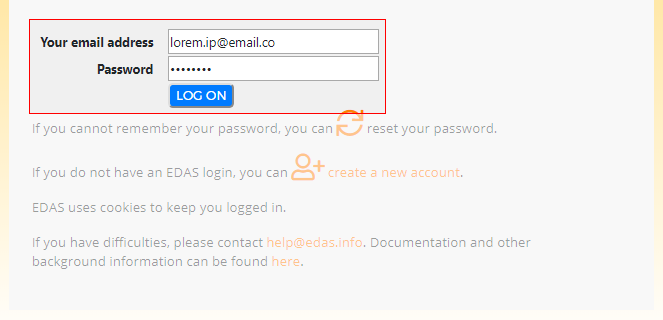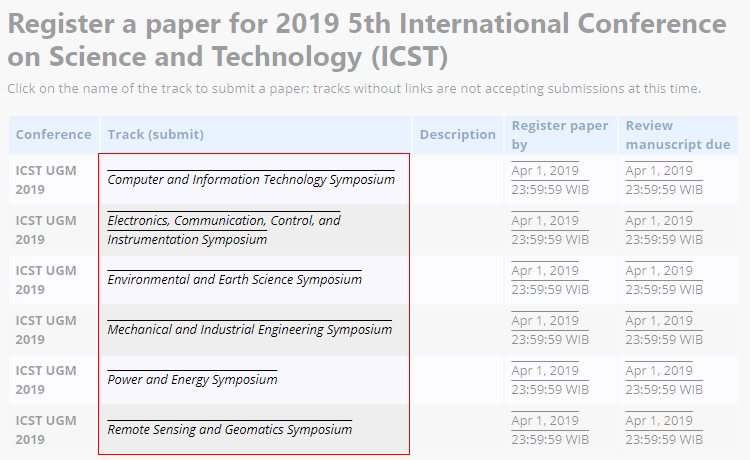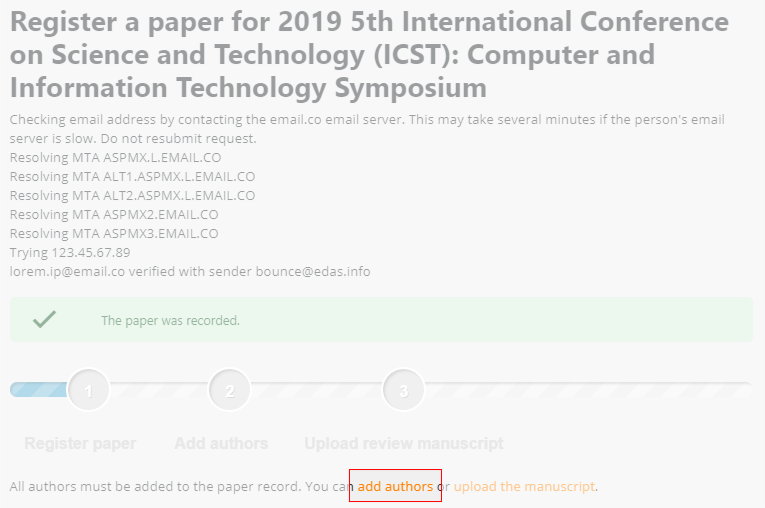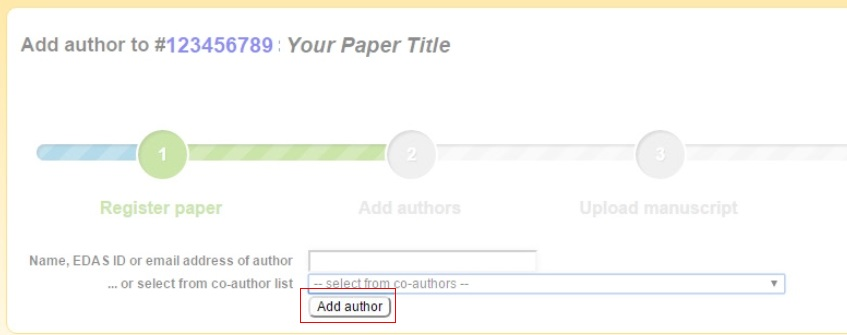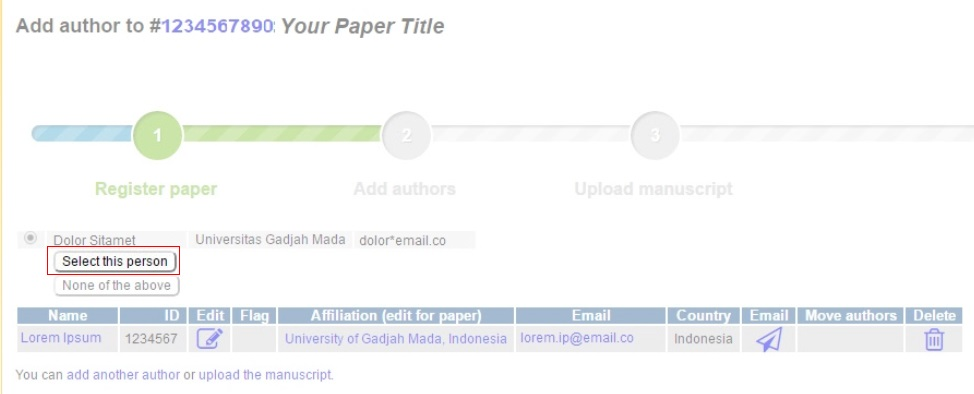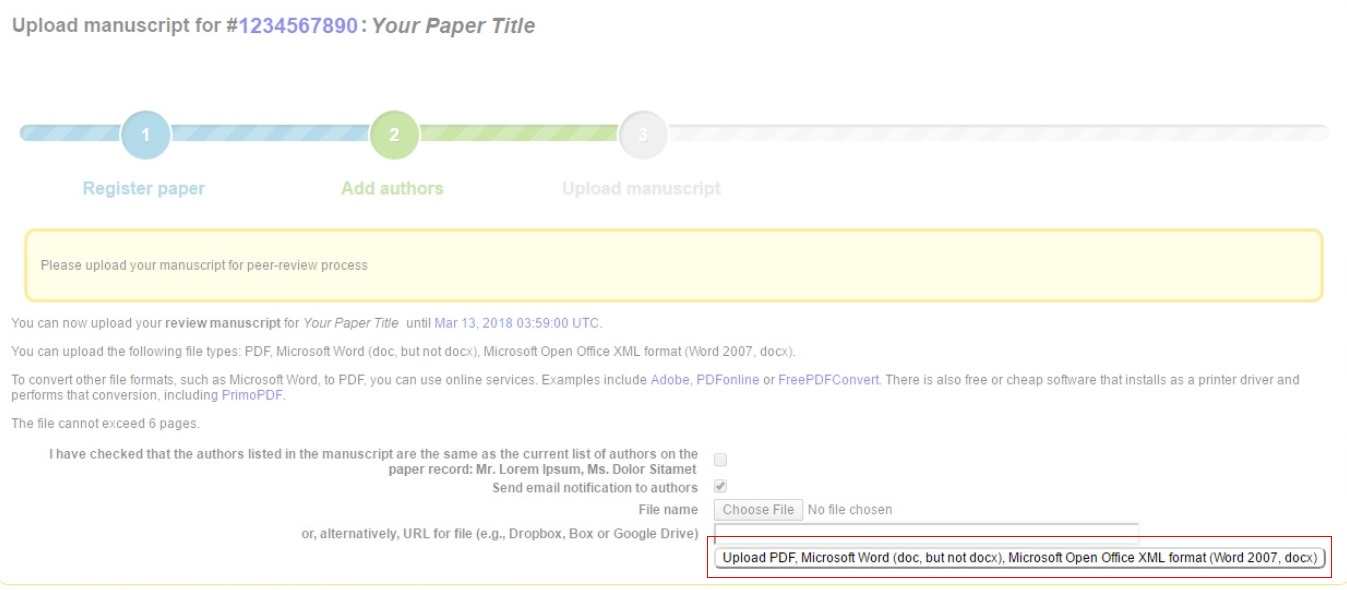
Hi, applicants!
To participate as a presenter in the ICST 2023, there are nine steps that you need to follow.
1. Go to the Scientific.Net site
Type Scientific.net on your browser and click Register now below the login form.

2. Entry your details
Type your information in the required fields (marked with an asterisk), you can complete other information after the registration.

3. Verify your account
Verify your account by clicking the link in your email.

Your account has been created!
Now, you can go to the next step to activate your account.
Before submitting your manuscript, the authors need to activate their Scientific.Net account.
Type your Scientific.Net account details in the activation request form by clicking the button below.
If you still didn't get the email from the editors, feel free to contact us. Please note that we use a third-party software, so you cannot request in the end of time.
Your account has been activated!
Now, you can go to the next step to submit your manuscript in the system.
After activating a Scientific.Net account, you can submit your manuscript in the system. To maximize our services, you need to complete the following details before submitting your manuscript:
- The email address of all authors in your manuscript.
- Manuscript format and content in accordance with the author guidelines.
- The corresponding author is automatically selected from the submitter of manuscript.
1. Log in to the Scientific.Net site
Type Scientific.net and log in to your registered account.

2. Read Trans Tech Publications Ltd.' Policy and Ethics
Once you are logged in , click Author on the top menu.

Click Policies and Ethics under the Author home tab to view the Trans Tech Publications Ltd.' Policy and Ethics .
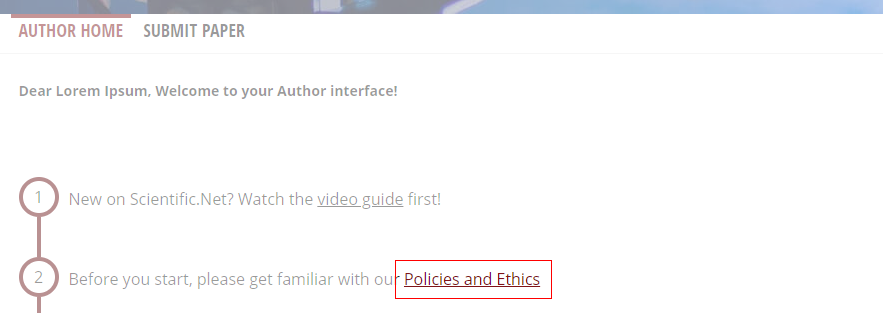
Please read it carefully before starting to upload your paper.
3. Go to symposium's tab
On the Author home tab, click Upload page to begin the paper submission.

Select radio button on "The 9th International Conference on Science and Technology" and click Continue button to confirm it.

4. Entry your paper details
On the Edit paper tab, browse your DOC/DOCX/RTF/ZIP and PDF files. Click Upload button to start uploading. The uploaded files should be less than 64 MB.

Type your paper title and abstract, then click Update.

5. Select your co-author
Add your co-authors account by clicking Add new button under Edit authors tab. Find your co-authors account by their names, emails, or ORCID.

6. Add your paper's keywords
Add your paper's keyword by clicking Add button after writing it in the box. Use the toolbar to type an unusual character, e.g., Latin expressions, mathematical and chemical formulas, or Greek symbols.
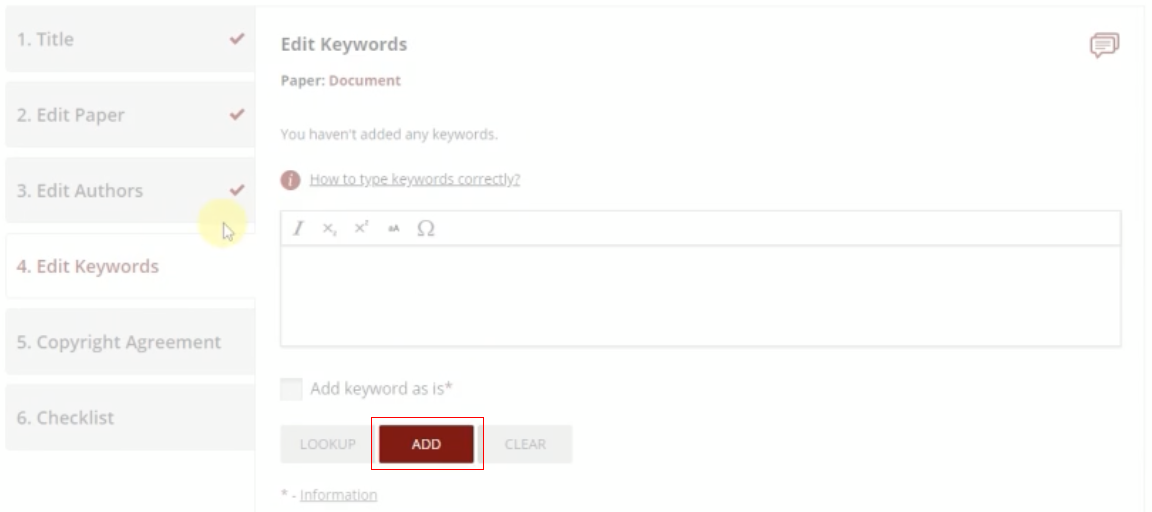
7. Sign the copyright agreement
Read the copyright agreement carefully. Select radio button on "Author's own work", tick the box "I confirm that I have been entitled by all authors to sign this Agreement on their behalf", and click Accept button.

Your agreement has been signed. You can download your agreement by clicking on the PDF icon.

8. Tick the checklist
Tick all required fields (marked with an asterisk) and finish it by clicking Submit button.
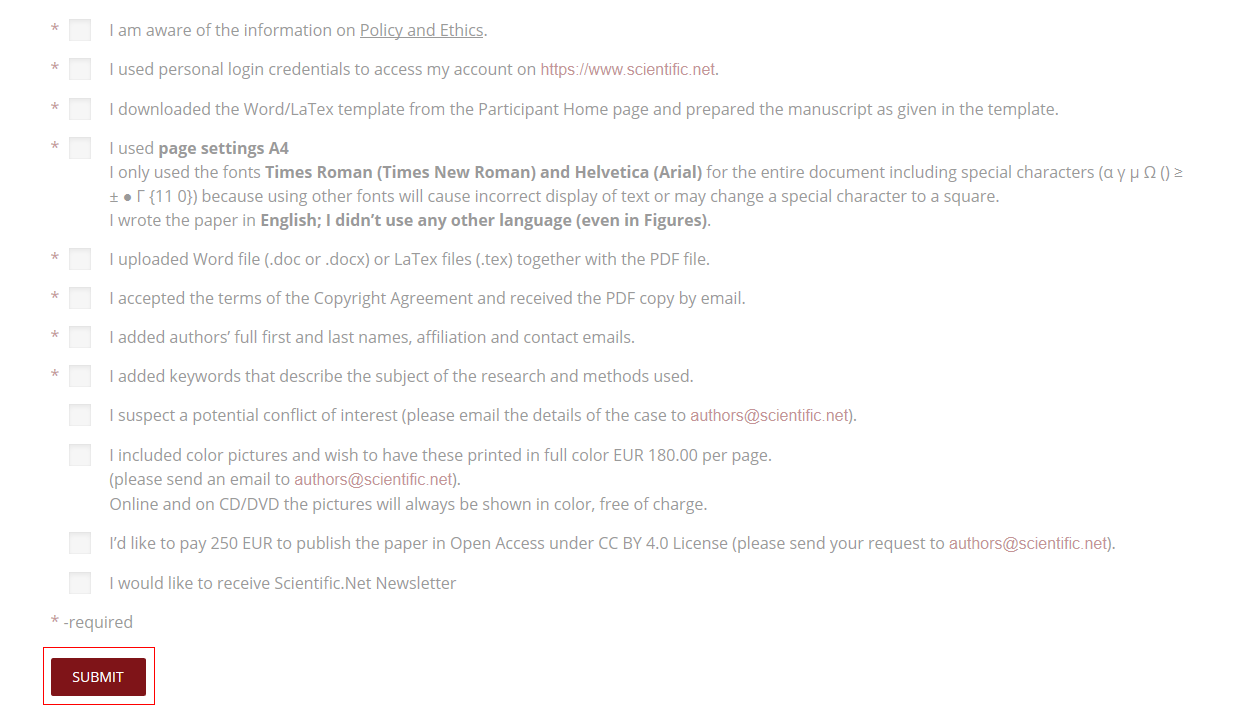
Your paper has been submitted. You can watch the tutorial video on the Author home tab.
If you still require further assistance, please feel free to contact us.
Your manuscript has been uploaded!
Your manuscript is under review process and we will notify you again soon.
If your manuscript has been accepted to be presented at the conference, you need to pay the conference fee before uploading the final manuscript. FYI, one manuscript can only be delivered by one presenter. However, one presenter can deliver more than one manuscript.
The 5th step has been cleared!
You can prepare your presentation document while waiting for the verification of your payment.
In the ICST 2023 presentation submission form, upload the PPT/PPTX/PDF document by filling the form.
If you have any issues with uploading your presentation, please contact us. As a reminder, document that are not received by the deadline will be considered no-shows in accordance with the non-presented paper policy.
Your presentation document has been submitted!
Now, you need to present on the conference day on November 1–2. If you cannot present on the conference day, your manuscript will be considered no-shows in accordance with the non-presented paper policy.
After your camera-ready manuscript and presentation document has been submitted, you also need to attend the conference for a live Q&A session. Please note that you need to make time on November 1–2 in the Yogyakarta, Indonesia, because the conference program cannot be rescheduled and must be in accordance with the program given by the committee.
If you are unable to attend for any reason, make sure that one of the co-authors can replace your presence. Change of attendance will result in a change of name listed in the certificate which we will send by email.
After you got the notification of acceptance, you need to finalize your final manuscript in accordance with the review results.


